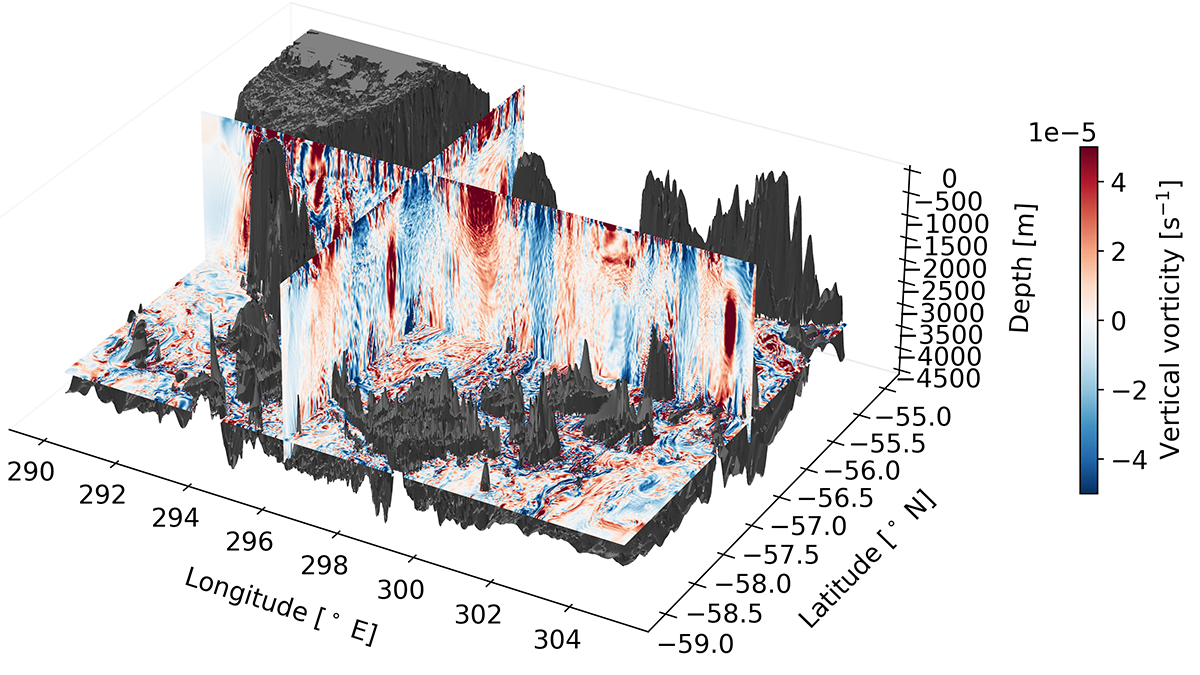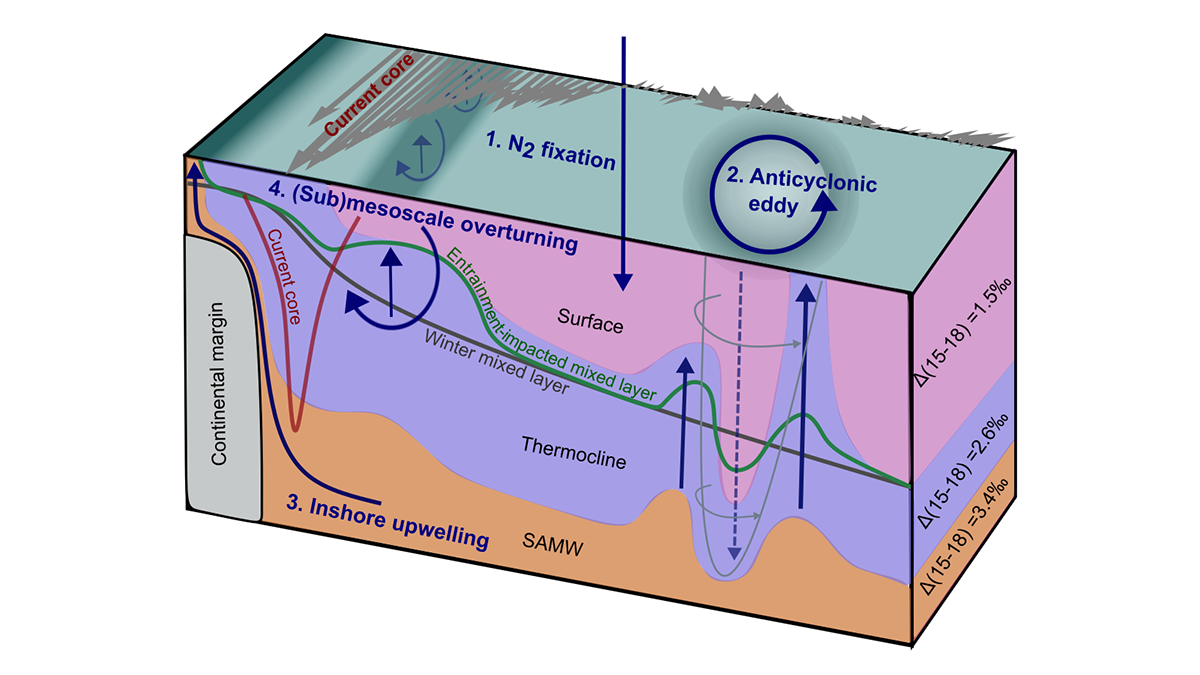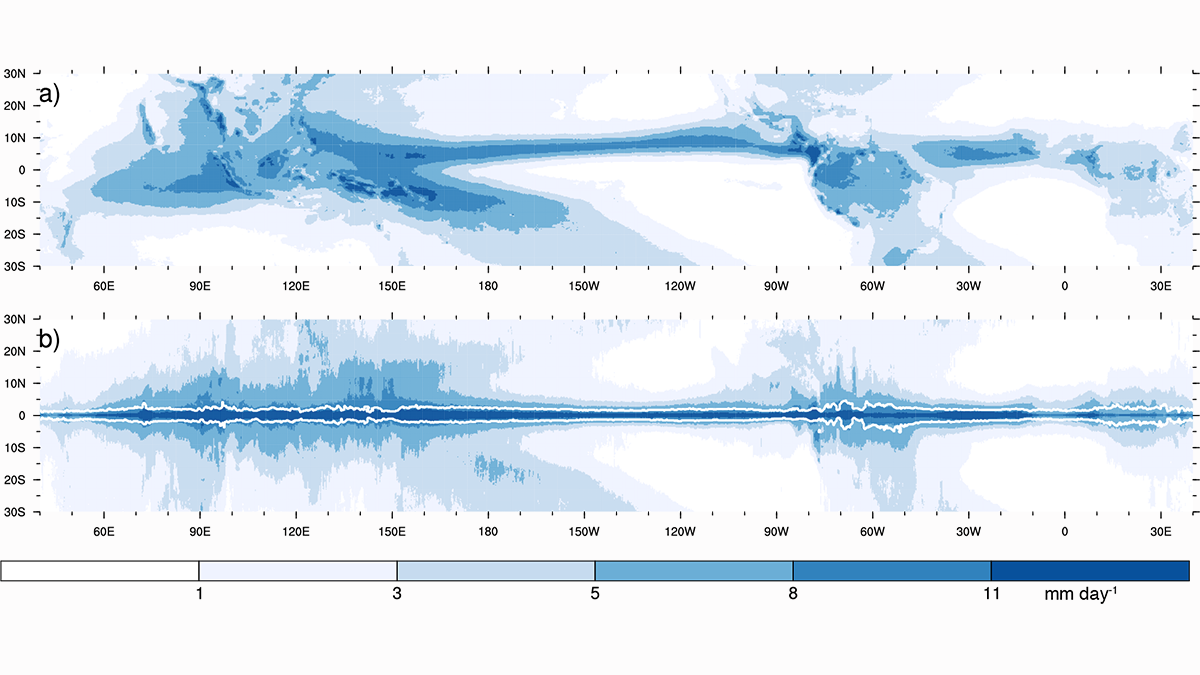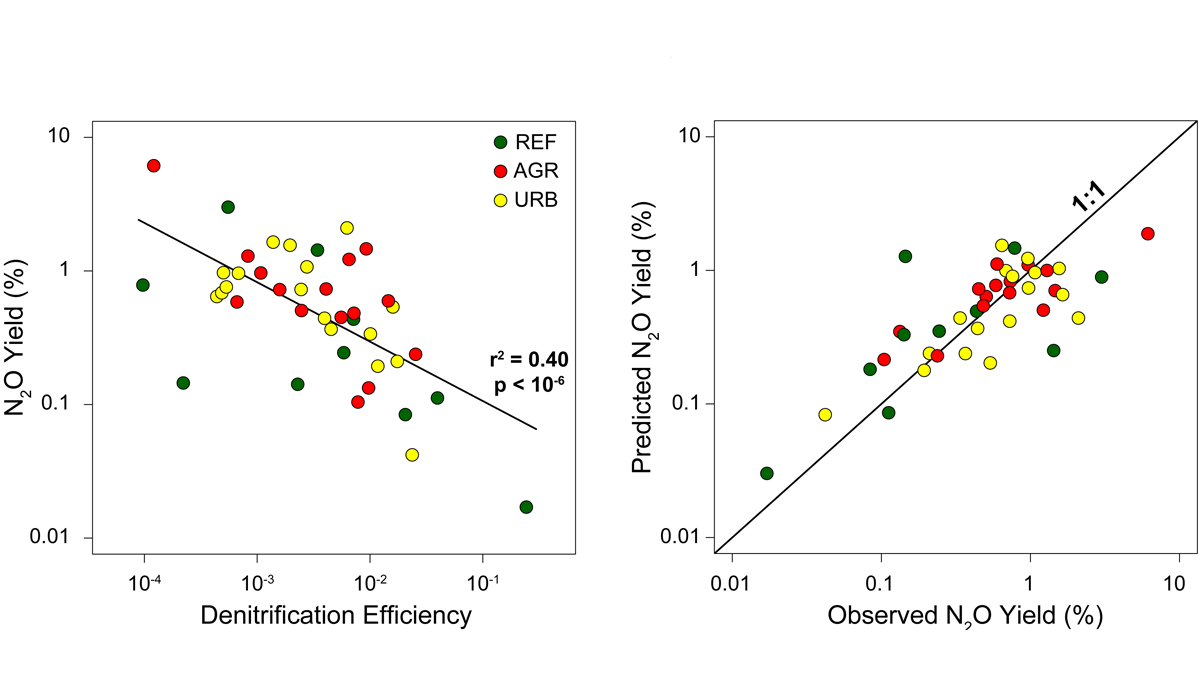A high-resolution regional model of the Southern Ocean reveals how topographically induced mixing in the abyss is important in creating the water masses that can upwell back up to the surface.
Nicolas Gruber
How Nutrients Get Back Up to the Surface Ocean
A new dual isotope tracer technique is used to assess the role of a number of poorly understood nutrient supply mechanisms fueling biological productivity in the ocean.
Marine Molybdenum Loss During the Toarcian Ocean Anoxic Event
The reconstructed loss of molybdenum during the Toarcian ocean anoxic event suggests deeply anoxic conditions during this time period allowing massive amounts of organic carbon being buried.
Differential Evolution of the Pacific Oxygen Minimum Zones
The latest generation of Earth System models simulate an expansion of the oxygen minimum zones in the Pacific, but their inner core, where oxygen levels drop to near zero, contracts in the future.
Why Does It Rain So Much Over Tropical Land?
Analyses of observations show that tropical land receives more rain than its fair share, owing to a proposed negative feedback that is not captured in current climate models.
The Long-Lasting Impact of a Nuclear War on the Ocean
Model simulations of the impact of a large-scale nuclear war reveal long lasting effects with much of the ocean not returning to pre-war levels despite the cessation of the initial cooling.
Inventorying Earth’s Land and Ocean Greenhouse Gases
A new special collection in AGU journals will present findings from the Second REgional Carbon Cycle Assessment and Processes (RECCAP2) study with a decade of data on greenhouse gas growth.
What Controls Nitrous Oxide Emissions from Rivers?
Statistical and numerical models show that denitrification efficiency is a key parameter controlling the production of N2O from rivers, providing a target for river restoration projects.








